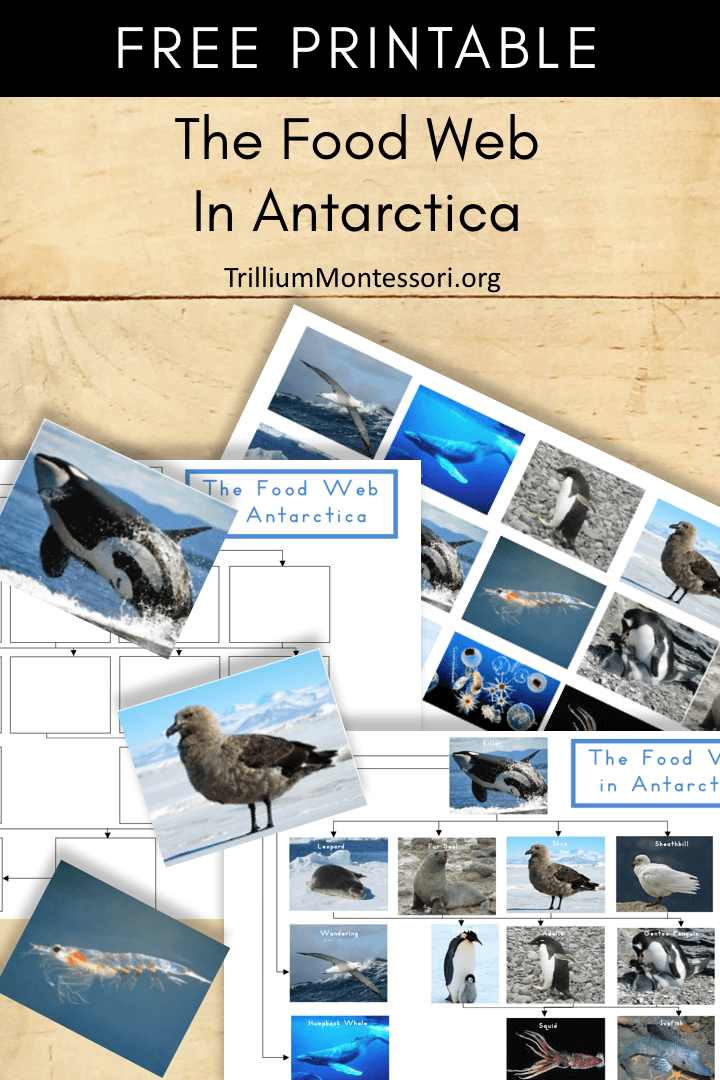The Antarctic Food Web
Antarctica is a cold and icy place, but did you know that there are many different animals that live there? These animals all have to eat something, and they are all part of a big chain of eating called the food web. Scroll down below to download this free printable about the Antarctic food web. We used this as a matching activity with our younger students. Cut out the pictures and see if you can put them in the correct place on the food web.

Let’s start at the bottom of the food web. The tiniest animals in Antarctica are called plankton. They are so small that you can’t even see them with your eyes! Plankton are made up of tiny plants and animals that float in the water. Diatoms are a common type of plankton.
Plankton are eaten by bigger animals like krill, which are small shrimp-like creatures. Krill are a very important part of the food web because many animals eat them.
Next, let’s talk about ice fish. They live in the cold waters around Antarctica and they eat krill. Ice fish are a type of fish that can survive in the freezing waters of Antarctica. They are eaten by animals like squid and also by some bigger fish.
Now let’s move on to the birds. One of the largest birds in Antarctica is the wandering albatross. They have huge wings and can fly for days without stopping. They eat fish and squid. Another bird in Antarctica is the skua. They are fierce predators and will steal food from other birds, such as penguins.
Speaking of penguins, they are some of the most famous animals in Antarctica. They eat fish and krill. One of their biggest predators is the leopard seal. They are big and powerful and will eat penguins if they can catch them.
Another predator in Antarctica is the killer whale. They are the largest members of the dolphin family. They are also known as Orcas. They eat fish, squid, penguins and seals.
Let’s not forget about the baleen whales, the gentle giants of the ocean! Blue whales and Humpbacks swim in the waters around Antarctica and mostly eat krill. Even though they are very large animals, they are sometimes eaten by killer whales.
In the Antarctic food web, everything is connected. The tiny diatom plankton are eaten by krill, which are eaten by ice fish, which are penguins, which are eaten by seals, which are eaten by killer whales. It’s all one big cycle of eating and being eaten. We loved singing this song, “Crusty Krill“, when learning about the food webs and food chains in Antarctica.
How To Get This Printable
I’ve added this printable to the Resource Library so head over there if you’d like to download a copy for yourself. The Library is a free resource for our newsletter subscribers. If you’re already a subscriber, your password is in the most recent newsletter. If you’re not a subscriber yet, please sign up below. The password will be included in your welcome email after you confirm. Thank you very much for joining me!
Related Products
Click the images for details. (Affiliate links may be included in this post. See full disclosures here.)
Seemi holds a Master's degree in education, and an AMS Early Childhood credential. She has twenty years of experience in Montessori as a teacher, school administrator, and school owner. Seemi is the founder of TrilliumMontessori.org.



